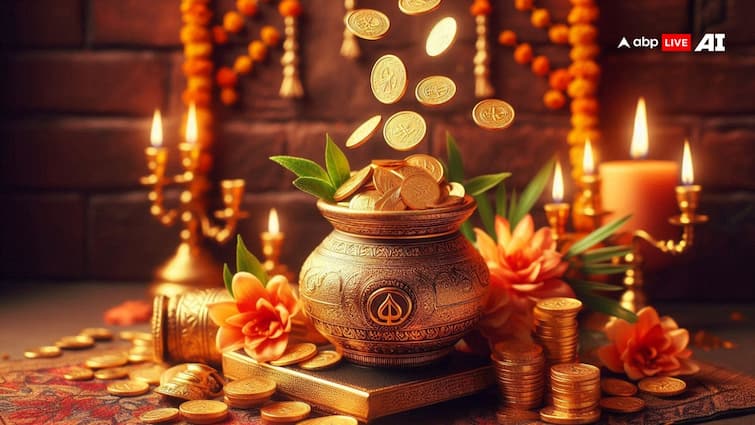Gold has always held a special place in Indian homes. It’s not just the glitter of a new necklace bought for Diwali or the pride of heirloom bangles passed down from a grandmother. For many families, gold is a mix of tradition, emotion, and financial security.
This festive season, despite record-high prices, the allure of the yellow metal remains as strong as ever. Whether you’re planning to pick up a dainty chain for Dussehra, invest in coins during Navratri, or explore digital gold, buying wisely is key.
Here’s a complete 12-point guide to ensure your purchase is auspicious, secure, and smart.
Purity Check Is Non-Negotiable
Gold purity is measured in karats (K). While 24K is pure gold (99.9 per cent), it’s too soft for everyday jewellery. Most ornaments are crafted in 22K (91.6 per cent), and coins or bars are usually 24K. Always confirm what karat you’re buying, and remember that even small variations can impact both value and resale.
Demand Hallmarking
Hallmarking by the Bureau of Indian Standards (BIS) is proof of authenticity. Look for the BIS logo, purity grade, and a Hallmark Unique Identification (HUID) number. This is your best safeguard against fraud and ensures your gold can be trusted by future buyers or lenders.
Know Today’s Gold Rate
Rates fluctuate daily and differ by city. Check the current 22K and 24K rates in your area before stepping into a showroom. Being informed prevents you from overpaying and also helps if you plan to compare offers from multiple jewellers.
Negotiate Making Charges
The complexity of design impacts making charges, which can be a percentage of the gold’s value or a flat rate per gram. During festive sales, jewellers often reduce or waive these charges, so don’t hesitate to negotiate. Even a small reduction can save thousands on a larger purchase.
Clarify Wastage Costs
Some jewellers levy “wastage charges” to cover gold lost in crafting. Ask if this is included in the making charges or billed separately. Transparency here avoids unpleasant surprises on your invoice.
Factor in GST
Gold attracts 3 per cent Goods and Services Tax (GST) on the final value, whether it’s jewellery, coins, or bars. For instance, a purchase of Rs 1,00,000 will carry Rs 3,000 as GST. Buyers should account for this upfront, as it directly increases the final cost.
Understand Buy-Back Terms
Resale is common in India, so check the jeweller’s buy-back policy. Will they deduct making charges? Do they pay market-linked rates? These details matter for future liquidity, especially when you need to upgrade or exchange ornaments.
Insist on a Clear Invoice
Your bill should mention gold purity, weight, making charges, GST, and the HUID number. A detailed invoice protects you if you exchange, resell, or face disputes later. It also ensures transparency in pricing.
Check the Reputation of the Jeweller
Stick to reputed jewellers or certified platforms. Established names are less likely to cut corners on purity or billing practices. For online purchases, choose RBI-recognised digital gold providers to reduce risk.
Compare Across Options
Gold doesn’t only mean jewellery. You can invest in coins, bars, sovereign gold bonds (SGBs), gold exchange-traded funds (ETFs), or even digital gold. Jewellery may have sentimental value, but financial products often offer better returns, lower costs, and added security.
Beware of Festive Discounts
Attractive offers may hide higher making charges or hidden fees. Always do the math instead of getting carried away by the word “discount.” Reading the fine print ensures that you’re genuinely saving money.
Secure Storage Matters
Gold is valuable, so think about safekeeping. If you’re buying physical gold, invest in a bank locker or a secure safe at home. For those choosing ETFs or SGBs, storage is hassle-free since the gold is paper or digital-backed, eliminating theft risks.
A Tradition with Evolving Choices
Buying gold during Navratri, Dussehra, or Diwali is not just a cultural tradition but also a financial decision with long-term implications. With prices near record highs, industry experts stress that consumers should weigh purity, costs, and investment alternatives before making purchases.
While jewellery continues to dominate festive buying, the growing popularity of sovereign gold bonds, exchange-traded funds, and digital gold reflects a shift towards more structured investment avenues. Together, these options underline how India’s relationship with the yellow metal is evolving, from ornament to asset.
This festive season, millions are expected to shop for gold in some form. Whether in a showroom or on an investment app, the choices buyers make today will shape both their celebrations and their portfolios in the years ahead.



